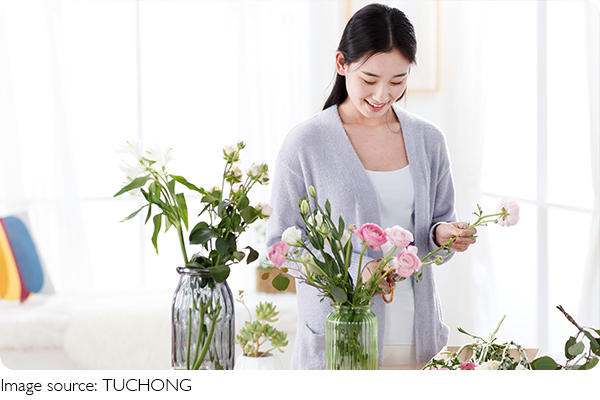Flower Arrangements

The art of flower arrangement, often referred to as Ikebana, refers to the use of cut branches, leaves, flowers, and fruits of plants as materials, which are configured into a refined and perfect work of floral art after certain technical processing.
The origin of the art of flower arrangement should be attributed to people's love of flowers, through the framing of flowers, expressing a mood to experience the reality and splendor of life.
After understanding what Ikebana is, let's talk about the role of Ikebana in people's real life:
1. Cultivating Temperament
Flower arranging is an art form that requires mindfulness, patience, and attention to detail.
The process of selecting, arranging, and showcasing blooms encourages individuals to become attuned to nature's beauty and embrace a more serene temperament.
To better create works, go to specific places to seek and collect materials that are beneficial to creation.
Traditional painting has been impacted by the advent of the AI painting era.
The art of flower arranging: A rich, diverse history and cultural symbolism in beautiful compositions.
Intricate designs come to life on ceramic surfaces.
The role of weaving in architectural design.
A roster of guitar legends, from Clapton to Hendrix, shaped music history with unique styles and enduring influence.
The meditative aspects of flower arranging promote a sense of calmness, helping individuals to reduce stress and find solace in the present moment.
By engaging with the natural world through flowers, people can develop a greater appreciation for simplicity, balance, and harmony in their daily lives.

2. Therapeutic Benefits
Flower arranging has long been recognized for its therapeutic benefits.
The act of arranging flowers can serve as a form of self-expression and creativity, providing an emotional outlet and contributing to one's overall well-being.
It has been found to alleviate anxiety, and depression, and improve mental health.
The vibrant colors, pleasant fragrances, and tactile experience of working with flowers stimulate the senses, promoting feelings of joy and relaxation.
3. Creating Employment Opportunities
The art of flower arranging has not only enriched individuals' lives but has also created a wide range of employment opportunities.
Florists, floral designers, and flower shop owners can turn their passion for flower arranging into successful careers.
From creating stunning bouquets for special occasions to designing floral arrangements for weddings and events, these professionals contribute to the beauty and ambiance of various settings.
Additionally, the demand for flowers in daily life, corporate events, and other celebrations fueled by the popularity of flower arranging has resulted in a thriving industry that generates employment for growers, wholesalers, and distributors.
4. Economic Growth
The flower industry is an essential part of the horticulture and agricultural sectors, contributing billions of dollars to national economies worldwide.

The demand for flowers, coupled with the artistry of arranging them, stimulates trade, creates jobs, and fosters economic development in regions that specialize in flower production.
5. Cultural Appreciation
Flower arranging represents a rich cultural heritage and plays a vital role in celebrating diverse traditions.
In countries like Japan, Ikebana holds great cultural significance, embodying principles of aesthetics, balance, and symbolism.
Flower arranging competitions, exhibitions, and workshops provide platforms for cultural exchange, fostering an appreciation for different floral styles and design techniques.
Flower arranging brings beauty into people's lives, both metaphorically and literally, leaving a lasting impact on individuals and society as a whole.

 · Art Team
· Art Team